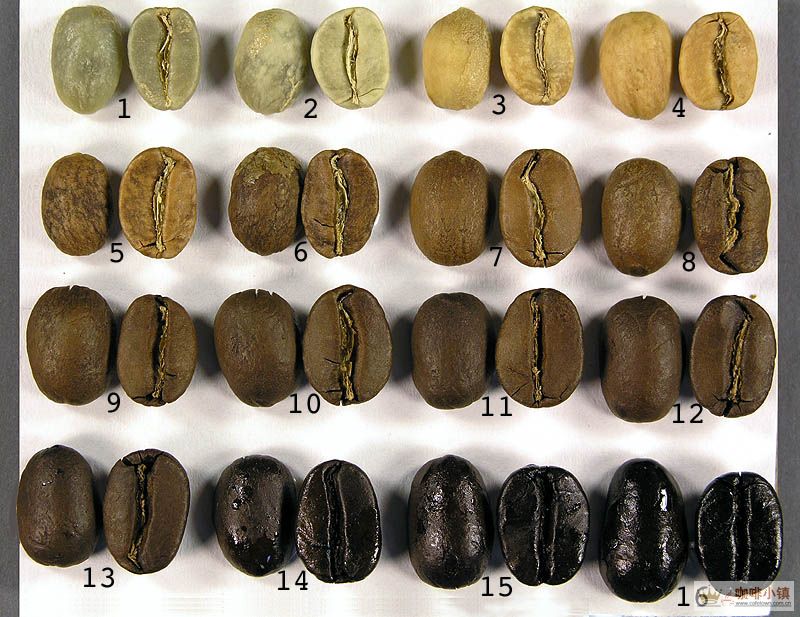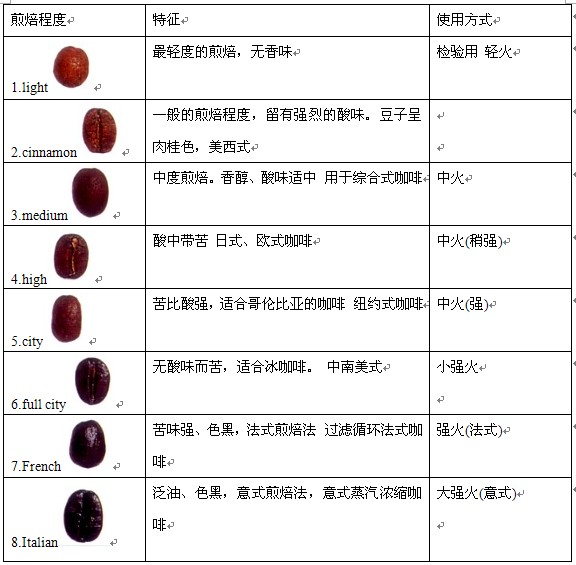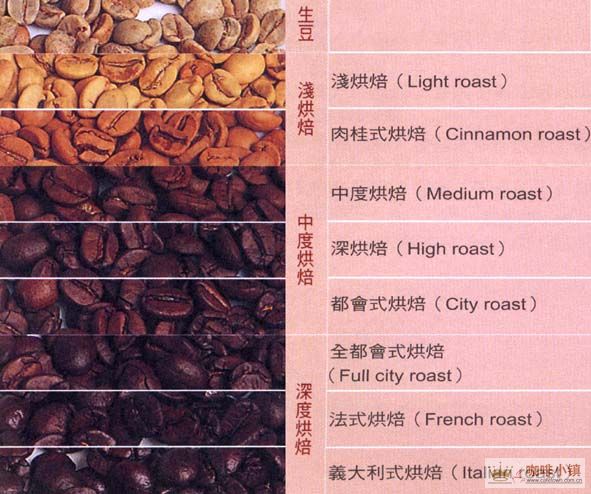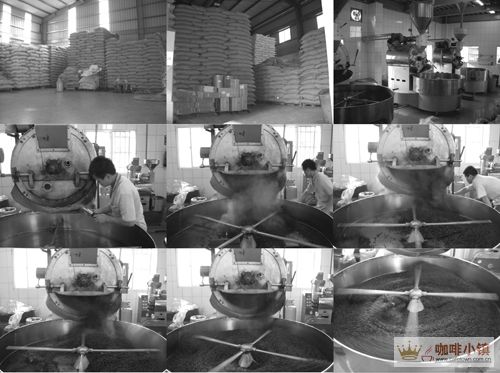Baking principles and classification of high-quality coffee beans

The raw coffee beans are fried to make the coffee beans show a unique coffee color, aroma and taste. The most important thing of frying and baking is to be able to stir-fry the inside and outside of the beans evenly without overscorching. 80% of the taste of coffee depends on roasting, which is the most important and basic condition for making good coffee.
The basic principles of ● Fried Culture
The most important thing is to be able to stir-fry the inside and outside of the beans evenly. First of all, the moisture in the beans will be discharged smoothly through firepower. If this step is too hasty, it will be spotted, and the taste will be astringent and choking.
80% of the taste of coffee depends on fried culture, so fried culture is an important procedure for brewing good coffee.
If the technology of fried culture is good, the beans will be big and swollen, there are no wrinkles on the surface, and the light is said to have different flavors. Frying coffee beans to the maximum limit is the ultimate goal of fried culture.
Classification and stage of ● Fried Culture
The roasting of coffee beans can be divided into three categories: light fire, medium fire and strong fire, and these three kinds of roasting can be subdivided into 8 stages, as shown in the table.
Three stages of frying degree characteristics and mode of use
The lightest frying of 1.light, light heat for odorless testing
2.cinnamon general fried degree, leaving a strong sour taste. The beans are cinnamon-colored and western-style.
Medium fried 3.medium. Mellow, moderate sour taste for medium heat of comprehensive coffee
4.high acid with bitter Japanese coffee and European coffee in medium heat (slightly stronger)
5.city bitterness is stronger than sour, suitable for Colombian coffee New York coffee is medium (strong)
6.full city is not sour but bitter, suitable for iced coffee. Small strong fire in Central and South America
7.French bitter, black, French roasting filter circulation French coffee strong fire (French)
8.Italian oily, black, Italian roasting French steam espresso (Italian)


The baking characteristics of ● cities in the world
Cities all over the world have their preference for frying and baking. In Tokyo, high-roast is more popular, but slowly tends to be deep. As for Kansai, deep-frying has been more popular in the past.
New York, like its name, generally prefers city roast, but because the city is inhabited by different races, it also sells coffee beans with different degrees of roasting. Vienna, on the other hand, prefers deep-fried full-city roast. What's more, as the name suggests, the French prefer the French way of frying, while the Italians often use the Italian way of frying.
However, in recent years, people in Europe and the United States have widely used German (high-city) to dark (the most commonly used deep roasting in Brazil and Italy), and the variety is varied, while coffee made by steam pressurizer is still popular.

Important Notice :
前街咖啡 FrontStreet Coffee has moved to new addredd:
FrontStreet Coffee Address: 315,Donghua East Road,GuangZhou
Tel:020 38364473
- Prev

Boutique coffee how to distinguish the label of coffee roasting
This is some study of coffee label. How to distinguish between several degrees of baking? If you see Italian, Vienna, Nanyi and other signs on the coffee label, do not mistakenly think that the coffee beans have anything to do with the above place names-probably not, because traditionally, "Italy" and "Vienna" are synonyms for the degree of roasting (or the way they are mixed).
- Next

Boutique Coffee Science choose the fried degree of coffee beans
What is the fried culture of coffee? The act of fried coffee and raw beans is called fried culture in the coffee world. In the early days of the discovery of coffee beans, coffee was always consumed by boiling raw beans, but it has been used ever since it was discovered that fried culture can lead to the real aroma of coffee. The raw beans of coffee beans are actually tasteless. Experts all know that coffee is special.
Related
- Beginners will see the "Coffee pull flower" guide!
- What is the difference between ice blog purified milk and ordinary milk coffee?
- Why is the Philippines the largest producer of crops in Liberia?
- For coffee extraction, should the fine powder be retained?
- How does extracted espresso fill pressed powder? How much strength does it take to press the powder?
- How to make jasmine cold extract coffee? Is the jasmine + latte good?
- Will this little toy really make the coffee taste better? How does Lily Drip affect coffee extraction?
- Will the action of slapping the filter cup also affect coffee extraction?
- What's the difference between powder-to-water ratio and powder-to-liquid ratio?
- What is the Ethiopian local species? What does it have to do with Heirloom native species?

